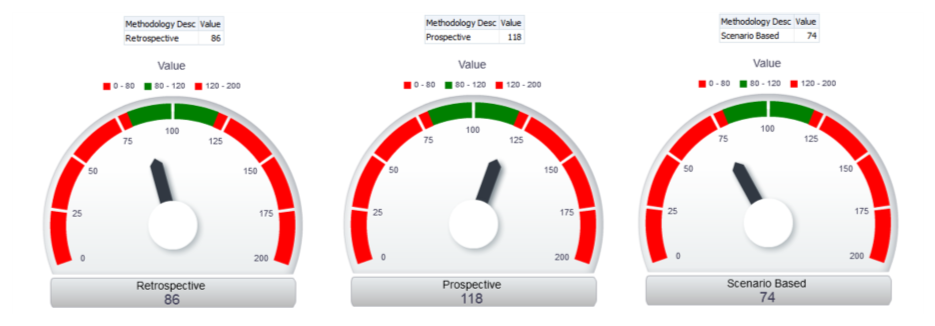Creating a Fair Value Run Definition (FV Run)
- From the Fair Value Determination Run Definition form,
click Add to open the Run
Definition window.
The Process Flow pane displays the available processes such as Definition Details, Legal Entities, Fair Value Definition, and Cash Flow Attributes. By default, the Definition Details process is selected.
Figure 6-5 The Run Definition Window

- Populate the Fair Value Determination Run Definition pane
as tabulated.
Table 6-5 The Fair Value Determination Run Definition Table
Field Name Description Name Enter a name for the definition. Description Enter a description. Folder Select the Folder from the drop-down list. Reporting Currency Select the reporting currency from the drop-down list. Access Type Select either Read Only or Read/Write.
- Read Only allows you to view the content but not make any changes to the details that have been defined. In effect, editing the content on the window is not possible.
- Read/Write lets any user modify the settings on the window and save the updated definition.
- Click the Legal Entities process from the
Process Flow form. The Legal
Entities pane is displayed.
- Select the folder from the drop-down list adjacent to the Hierarchy Folder field. The Folders are Segments defined under the current Information Domain for Legal Entities.
- Select the Legal Entity hierarchy for the Run, from the drop-down list adjacent to the Hierarchy field.
- Click Browse and select the Legal
Entities for the Run from the Hierarchy
Browser window. The selected Legal
Entities are displayed in the Legal
Entities for the Run
field.
Note:
This field is security enabled and the members listed in the Hierarchy Browser window are dependent on your privileges.
- Click Clear to clear the Legal Entities for the Run field. Click the Fair Value Definition process from the Process Flow pane to open the Fair Value Definition.
- Select the folder from the drop-down list adjacent to the
Folder field. The Folders are Segments defined under
the current Information Domain for Legal Entities.
- Select a Fair Value definition from the available list of definitions from the drop-down list adjacent to the Fair Value Determination Process field.
- Select the checkboxes adjacent to the instrument types you want to include in the Run definition by selecting the checkbox adjacent to the Instrument Types in the Instrument Types form. The list of instrument types is fetched from the Fair Value definition you have selected in the Fair Value Determination Process field.
- Select the checkbox adjacent to the Audit Near Market Value Instrument Types field, if you want to retain the set of Near Market value Instrument Types for later reference. If this checkbox is not checked, the application will not retain a record of which instruments were used in ascertaining a proxy value.
- Click the Cashflow Attributes process from the
Process Flow form.
Note:
The Cashflow Attributes process in the Process Flow pane is enabled only if you have installed OFS ALM.The Cash flow Attributes pane is displayed.
Note:
You must select at least one Instrument Type having a Cash flow process associated with it from the Instrument ypes pane to access the Cash flow Attributes process.The Cash flow Attributes pane displays the following attributes.- Product Characteristics
- Discount Methods
- Prepayments
- Forecast Rates
Note:
When a cross-currency interest rate swap is part of a Fair Value Run definition, you can select an additional discount method to compute the Fair Value of Hypothetical Derivative, related to the given swap. The discount curve used here must be adjusted for Basis Spread. - Select the Folder and Definition for each of these attributes, from the respective drop-down lists.
- Click the drop-down list adjacent to Opt for the hypothetical derivatives field and select the required discount method.
- Click the drop-down list adjacent to Base Scenario for the Accounting field and select the required scenario.
- Click Save to save the definition details.
The saved definition is displayed under the Fair Value Determination Run Definition pane in the Fair Value Determination Run Definition window.
The Audit Trail section at the bottom of the Run Definition window displays the metadata related to the definition such as Created By, Creation Date, Last Modified By, and Last Modification Date with a System ID. The User Comments section facilitates you to add or update additional information as comments.